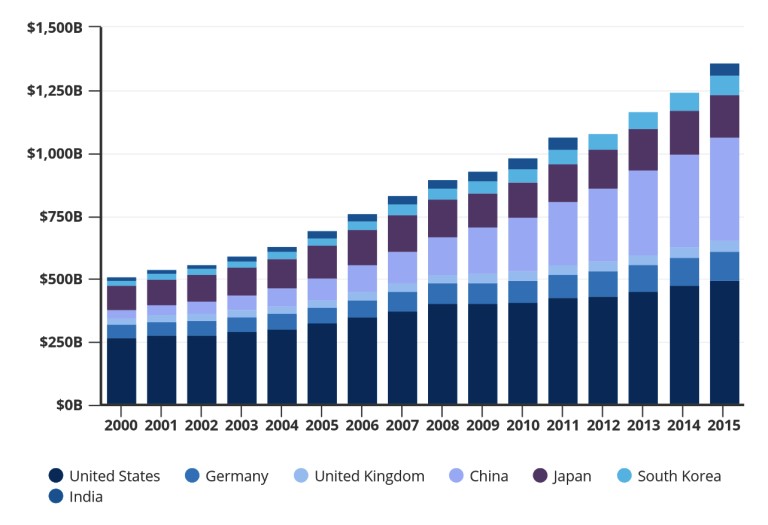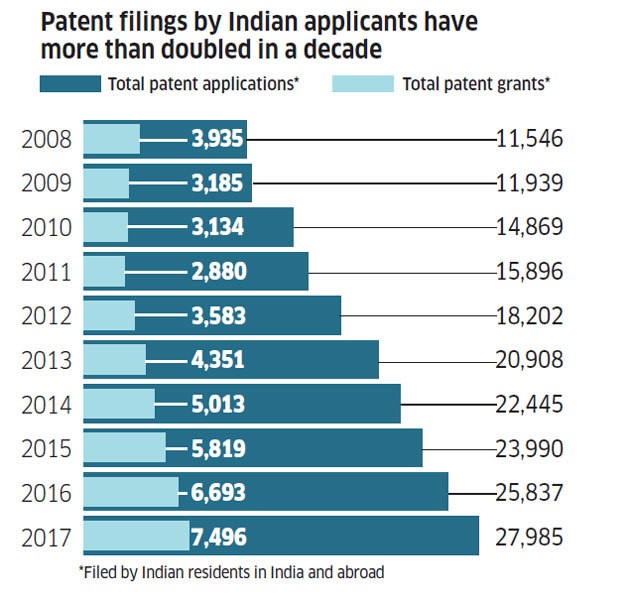
Working with the Japan Desk at Invest India, a question I often have to field is with regard to R&D in India. The cutting-edge innovations currently taking place in the country have garnered the interest of international investors looking to leverage Indian ingenuity. This brings to the fore the need to understand the nuances of R&D and its contribution to India’s growth story.
Research and Development (R&D/ R’n’D/ R+D) is undertaken by companies and governments to foster innovation to develop new products or services, and/or to improve the existing product lines. R&D encompasses all activities within an organisation geared towards increasing innovation, including, developing incubators, helping innovators take their innovations to scale and fostering an innovation ecosystem within the sector.
Why Invest in R&D?
While innovation is greatly valued, there are a multitude of benefits of investing in R&D that go beyond innovation for innovation’s sake. Firstly, investing in research and development ensures high market participation by the company. Market participation refers to the ability of the company to engage with its customer base and hook their interest by offering unique products. Such research and development may even lead to the creation of new markets.
The creation of innovative products not only adds new revenue streams but also increases brand visibility. The costs associated with undertaking R&D activities can be surmounted by credibly seeking public sector grants for innovation and development. This also opens up avenues for collaboration and public-private partnerships.
Additionally, investing in R&D can result in tax relief in certain geographies including India. The Government of India has provided an impetus to investments in R&D by way of various tax incentives. These incentives are available with respect to revenue and capital expenditures incurred by entities for carrying out R&D activities in relation to their businesses, including their contributions to various institutions for carrying out scientific research.
Types of Research and Development:
In order to further understand what research and development entails, it would help to break it down into the types of R&D. Broadly, research and development can be categorised as follows- basic research, applied research and development research.
-
Basic research:
It refers to experimental or theoretical work undertaken primarily to acquire new knowledge about the underlying foundation of varied phenomena and observable facts, without any particular application or use in view. For instance, research in pure mathematics, which may take the form of exploratory, descriptive or explanatory research can be classified under the basic R&D category.
-
Applied research:
Applied research is largely the same as basic research. However, it is undertaken with a specific practical aim or objective in mind. Applied research is an approach used in diverse fields ranging from business to medicine to education and beyond.
-
Development research:
While the aforementioned two forms of research and development are focused on the acquisition of new knowledge, development research takes into consideration existing knowledge and employs it towards producing new materials, products or devices, installing new processes, systems and services, or improving existing ones substantially. It is critical to differentiate between development research and engineering at this juncture. While development research results in the design and actualisation of prototypes and processes, engineering makes use of the end product(s) to produce commercial outputs.
Top Spending Industries:
Recent studies have shown that the industries/sectors that spend the most on research and development are:
Healthcare
According to an article in Healthcare Finance, the healthcare industry spent $ 782 bn on R&D in 2018 and is poised to have the highest R&D expenditure by 2020. The healthcare market in India is expected to be among the top 3 in the world by 2020 and therefore, presents a tremendous opportunity to investors within the sector. According to a study conducted by Deloitte, developments in digital health technology provide an opportune platform for enhancing R&D in healthcare. 100% of the respondents within the study outlined the importance of investing in device connectivity to enhance healthcare delivery in India.
Automotive
In 2018, the automotive industry spent $ 130 bn on R&D, marking a growth of 6-7% from 2017. Interestingly, the Indian automotive industry accounted for 40% of this global spend. A key subsector driving the investments in R&D is electric mobility. Globally, several countries including India have declared calendar goals for ensuring complete electric mobility in the manufacturing and marketing segments.
Software and IT
Further, in the same year, the Software and IT Sector accounted for $ 117 bn of the research and development spend, registering a growth of 18-19% over 2017. In India, this is reflected by the fact that $ 1.6 bn is spent annually on training workforce and growing R&D. Increased R&D spend has spurred labour productivity and integration of ICT in the broader economy. The graph below depicts how India’s domestic spend on R&D has tripled over 15 years and that of China has increased by approximately 10X.

Source: National Science Board, Science and Engineering Indicators (2018), Global R&D: One Measure of Commitment to Innovation.
Semiconductors
With a 7-8% growth rate, the semiconductor subsector is among the top 5 industry spenders on R&D with an investment of $ 61 bn. The sector is characterised by rapid technological changes, which demand high levels of spending on research and development.
Why Research and Development in India?
The starting point of this piece was the interest in Indian R&D evinced by foreign investors. The most commonly cited reason for this interest is the inherent ingenuity of research in India. However, Indians’ natural proclivity for ‘jugaad’ (problem solving using limited resources in an innovative way) aside, there have been concerted efforts to encourage investment in research. This is evidenced by the fact that patent filings by Indians have more than doubled in the last decade (see figure below).

Source: Economic Times
For instance, India introduced a patent box in the Finance Bill (2016) similar to that of Brazil, Turkey, Singapore and other European countries. Under Indian rules, royalty income from patents developed and registered in India is taxed at a concessional 10% rate (plus applicable surcharges). The concessional rate is applied to gross income or revenue.
Over and above the policy incentives, India’s highly skilled and educated demographic provides a ready and capable workforce to engage in cerebral research. In 2016, India produced the most number of graduates worldwide with 78 million fresh graduates, of which 2.6 million were from STEM (science, technology, engineering and math).
India’s burgeoning demographic dividend presents a billion opportunities across sectors and the perfect motivation for companies to constantly innovate, making India the global destination for research and development.
For investment opportunities in India, visit our resources section to learn more about FDI in India and Foreign Trade Policy.
- https://www.healthcarefinancenews.com/news/healthcare-will-spend-most-rd-any-industry-2020-says-pwc
- https://www.businessinsider.in/Here-are-the-industries-that-are-spending-the-most-on-RD/3-Software-Internet/slideshow/67466193.cms
- https://www.businessinsider.in/Here-are-the-industries-that-are-spending-the-most-on-RD/3-Software- Internet/slideshow/67466193.cms
- https://economictimes.indiatimes.com/news/economy/indicators/7-charts-that-show-how-india-fares-in-research-and-development/articleshow/67604780.cms
- https://economictimes.indiatimes.com/articleshow/63109240.cms?from=mdr&utm_source=contentofinterest&utm_medium=text&utm_campaign=cppst
- https://www.nsf.gov/statistics/2018/nsb20181/digest/sections/global-r-d-one-measure-of-commitment-to-innovation






